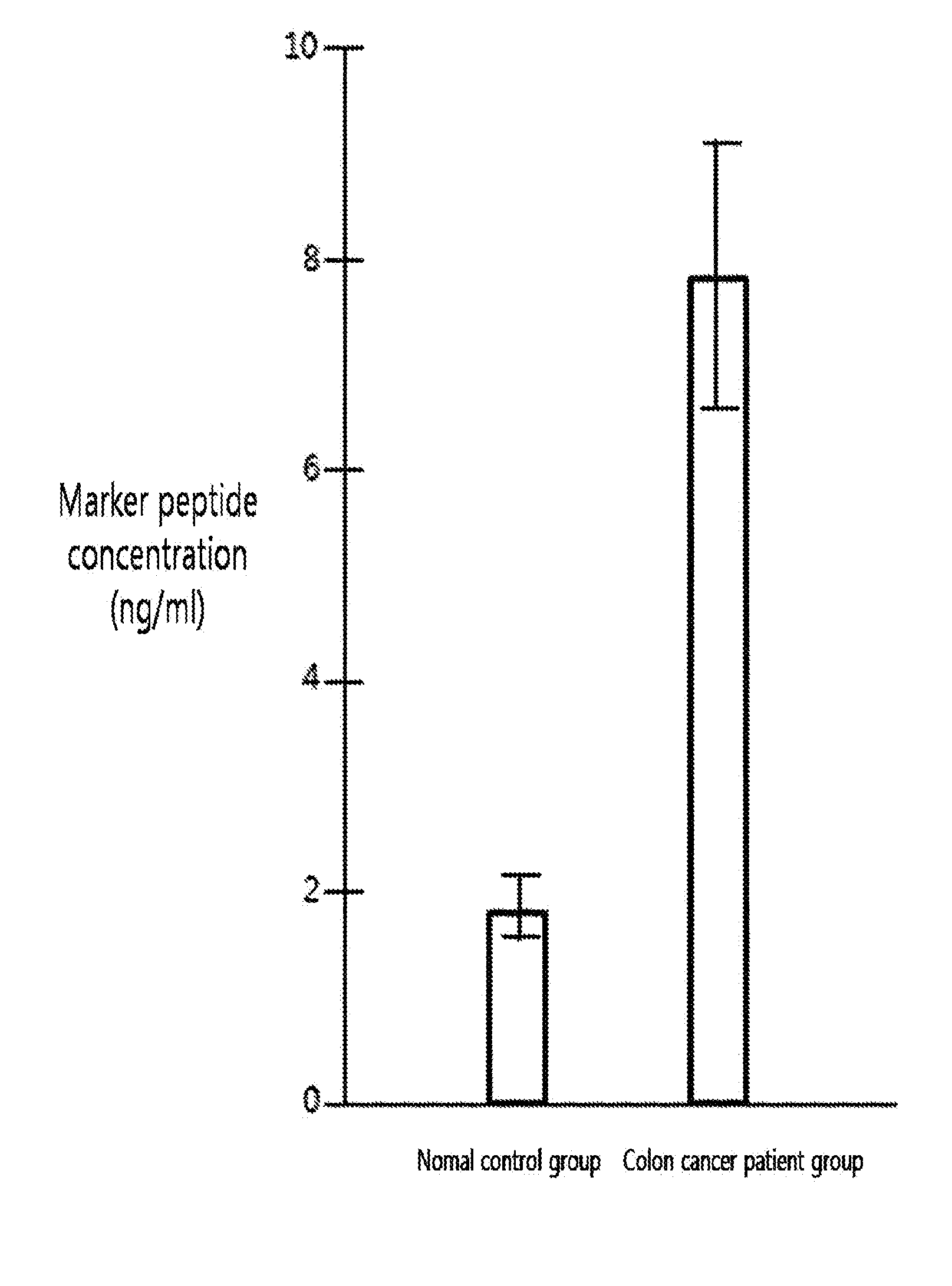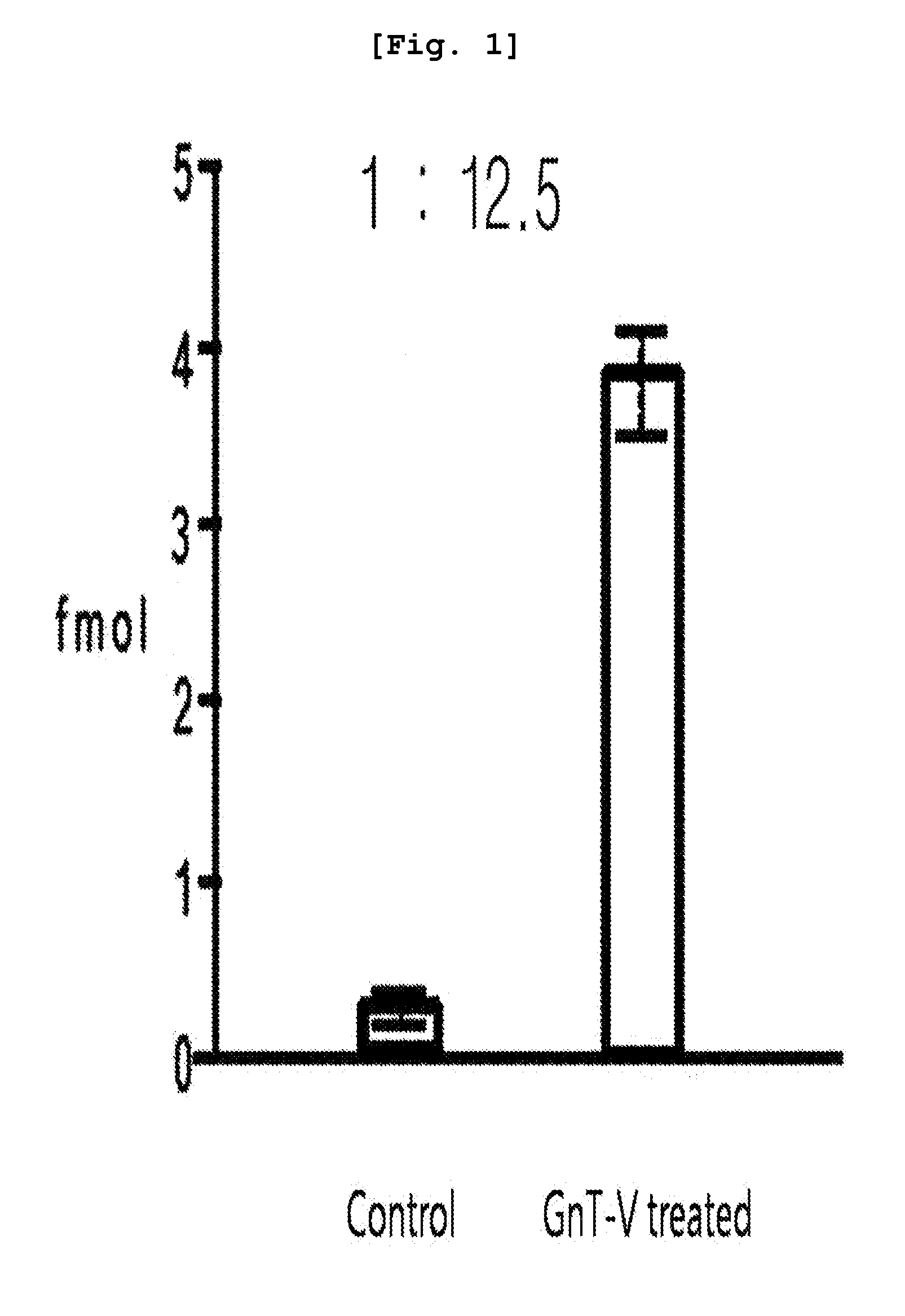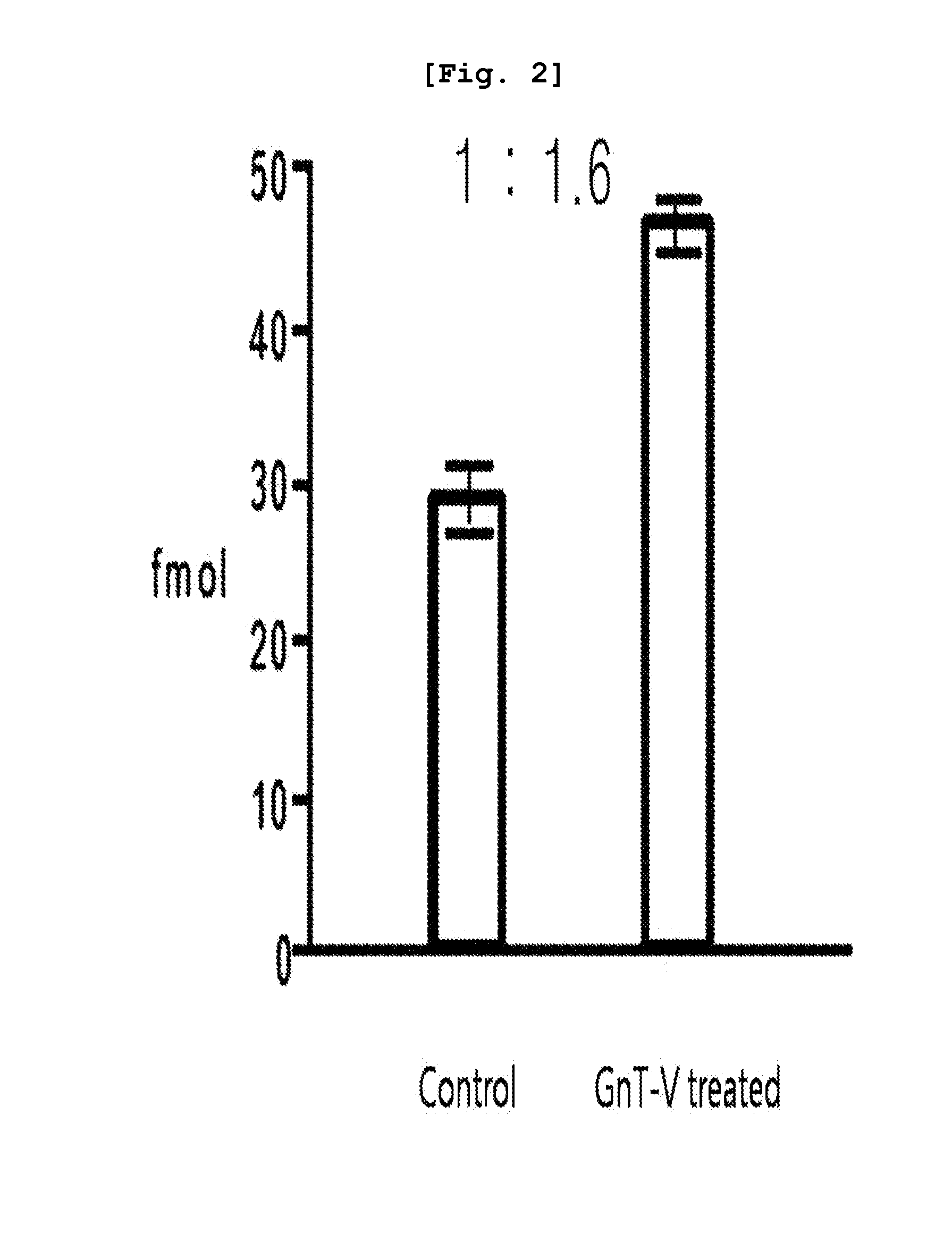Peptide marker for cancer diagnosis, and cancer diagnosis method using same
- Summary
- Abstract
- Description
- Claims
- Application Information
AI Technical Summary
Benefits of technology
Problems solved by technology
Method used
Image
Examples
example 1
[0081]To overexpress N-acetylglucosaminyltransferase (GnT-V), the glycosyltransferase overexpressed in cancer cells, human colon cancer cells were transfected with MGAT5, resulting in the preparation of stable transfectant cells. Then, the GTN-V overexpressing cells (GnT-V-treated cells) and the control cells were cultured. Equal amounts of culture fluids obtained from both group were concentrated until the volume reached 2 ml respectively. The concentrated samples were reduced using 14 mM β-mercaptoethanol, followed by desalting. One mg of the desalted protein was loaded to L-PHA-avidin-agarose beads, to which phosphate-buffered saline (PBS) was added. The mixture stood at 4° C. for 12 hours. The lectin conjugated protein was washed with PBS three times, and then the protein was separated from lectin by using 6 M urea. The obtained protein was 10-fold diluted with 50 mM ammonium bicarbonate, followed by hydrolysis using 10 ug of trypsin for overnight at 37° C with...
example 2
Selection of Marker Candidates via Peptide Analysis
[0082]HPLC (high-performance liquid chromatography) was performed using trap column (C18, 5 um, 300×5 mm) and analytical column (C18, 5 um, 75 um×10 cm) to analyze the samples prepared in Example 1, followed by LC / ESI-MS / MS using LTQ-FT mass spectrometer (Thermo Finnigan), the electrospray ionization (ESI) mass spectrometer. Each sample protein was hydrolyzed by using trypsin to obtain peptides. Some of the prepared peptide samples were 10-fold diluted, which proceeded to liquid chromatography connected to the mass spectrometer by 10 μl.
[0083]Based on the results of the mass spectrometry, various proteins were qualified from the samples obtained from the GnT-V treated cell line and the normal control cell line by using search engines such as MASCOT and SEQUEST. The relative amount of each protein existed in each sample was calculated based on the frequency of qualitative analysis of each protein. Significant proteins were screened f...
example 3
Confirmation of Marker Glycoprotein by Mass Spectrometry
[0086]Peptide samples obtained from the protein of each subject by hydrolysis using trypsin were added at the volume of 50 fmol to make the total volume 50 μl. 4 samples were prepared; 2 of them were through lectin separation and the other 2 were not finished with lectin separation. The standard material labeled with target peptide isotope was the synthetic standard material that had the identical amino acid sequence with the target peptide (marker peptide) but was different in peptide mass. This material was used as an internal standard material in MRM MS. In quantitative mass spectrometry, calibration curve was made according to the changes of concentrations of the target peptide and the synthetic standard material under the same analysis conditions.
[0087]A part (10 μl) of each prepared sample (50 μl) was used for LC / MRM MS. Quantitative analysis was performed in triplicate with the marker peptide (peptide mass, 1232.6) by MR...
PUM
 Login to View More
Login to View More Abstract
Description
Claims
Application Information
 Login to View More
Login to View More - R&D
- Intellectual Property
- Life Sciences
- Materials
- Tech Scout
- Unparalleled Data Quality
- Higher Quality Content
- 60% Fewer Hallucinations
Browse by: Latest US Patents, China's latest patents, Technical Efficacy Thesaurus, Application Domain, Technology Topic, Popular Technical Reports.
© 2025 PatSnap. All rights reserved.Legal|Privacy policy|Modern Slavery Act Transparency Statement|Sitemap|About US| Contact US: help@patsnap.com



